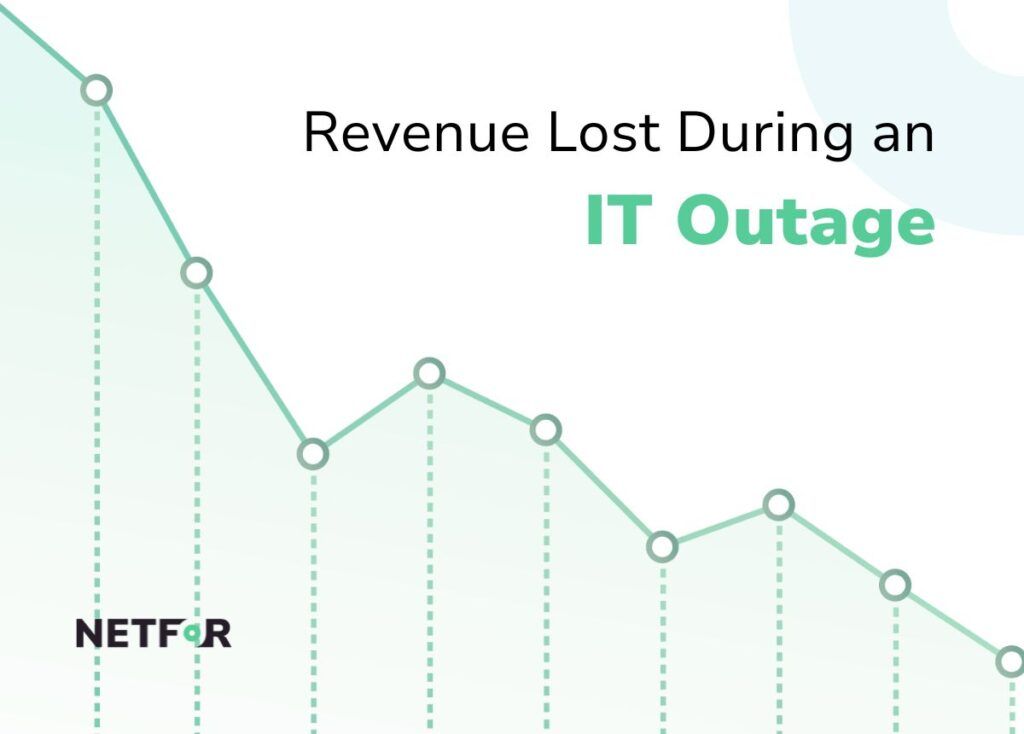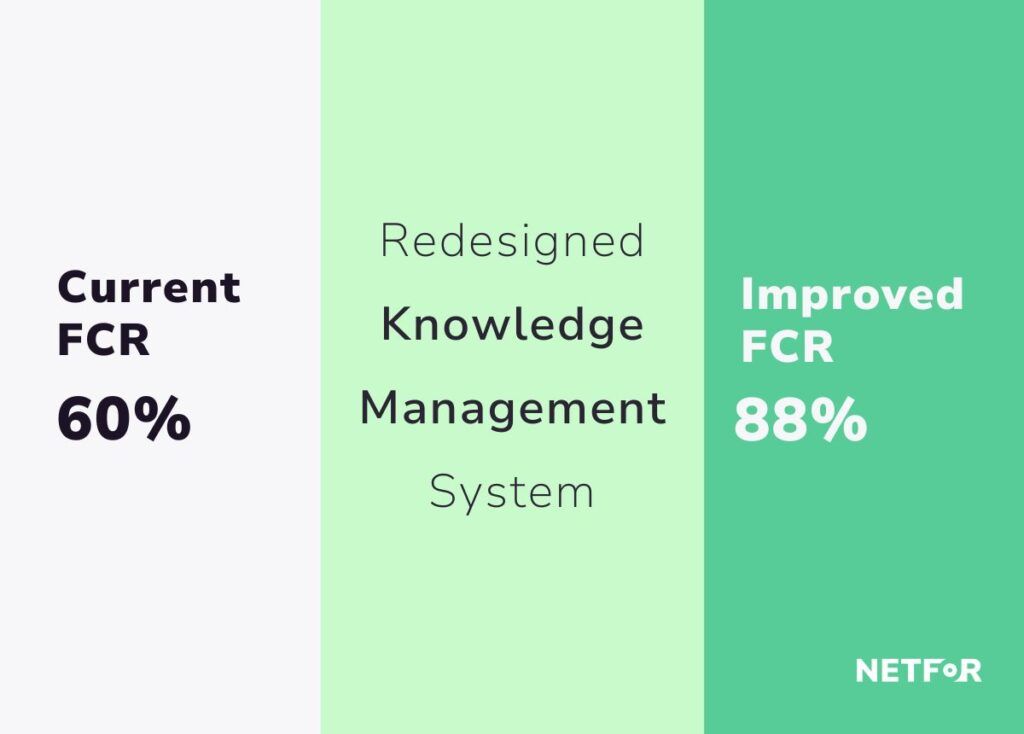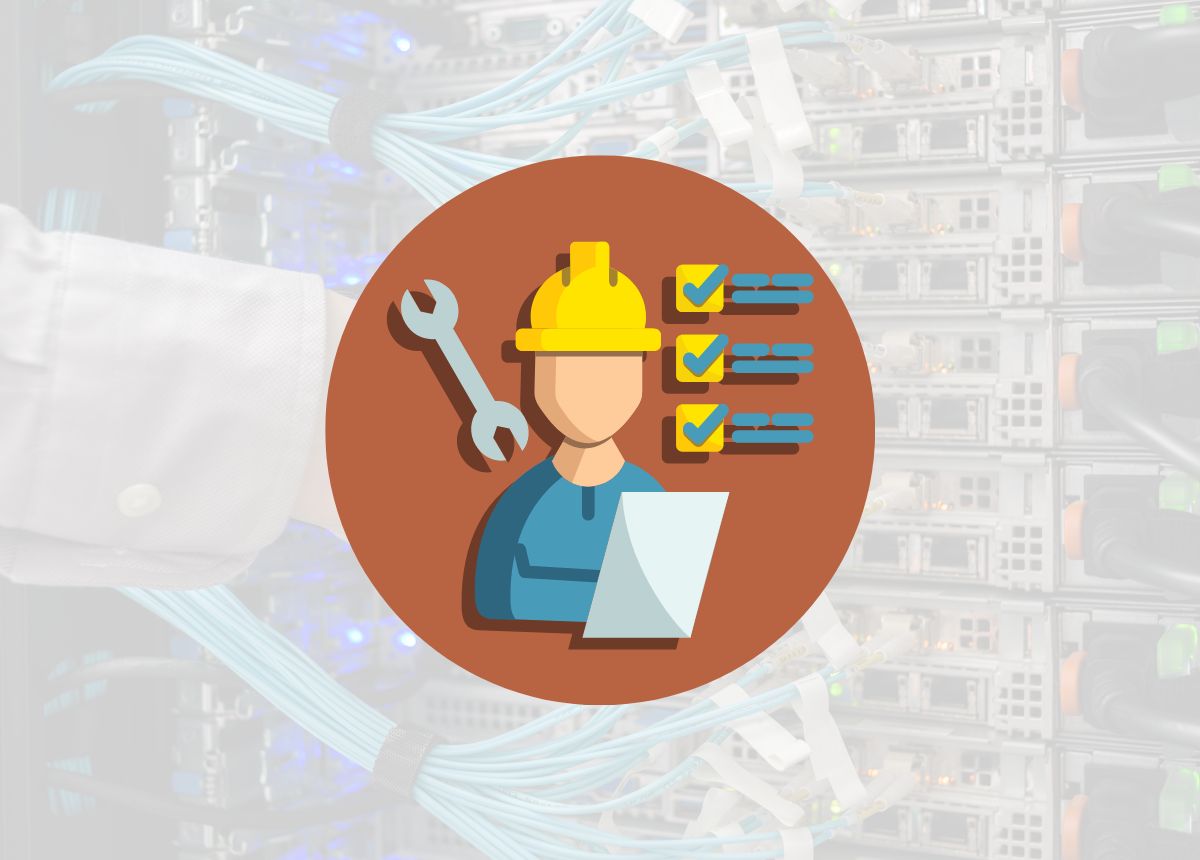Every minute of retail IT downtime costs an average of $4,700, and the damage goes beyond lost sales, affecting brand reputation and long-term customer loyalty. In an industry where technology powers everything from point-of-sale transactions to inventory management, even brief system failures can cascade into major business disruptions.
Modern retailers depend on complex, interconnected technology stacks to deliver seamless customer experiences, but when failures occur, the results are immediate and costly:
- Frozen POS systems: transactions stop, causing long checkout lines.
- Payment processor failures: customers cannot complete purchases.
- Inventory software crashes: staff lose visibility into stock, creating delays and errors.
- Network outages: disrupt connectivity across all systems, halting store operations.
- Self-service kiosk failures: frustrate customers who expect fast, independent checkout.
But the hidden costs run deeper. Research shows that 40% of customers will defect to competitors after just one unresolved technical issue, transforming temporary downtime into permanent customer loss.
The solution lies in building a comprehensive retail IT support infrastructure that goes far beyond traditional break-fix approaches. A well-structured program combining high-performance IT help desk services, proactive system monitoring, and responsive field services doesn’t just resolve problems; it prevents them. For retail operations managers and IT leaders, this represents a fundamental shift from viewing IT support as an operational expense to recognizing it as revenue protection and a competitive advantage.
The True Cost of IT Failures in Retail Operations
The financial impact of technology failures in retail extends far beyond the immediate revenue loss during an outage. Consider Amazon’s 2018 Prime Day disaster, where system failures lasting just a few hours resulted in an estimated $72 to $99 million in lost revenue. Customers encountered broken product pages and incomplete transactions during one of the company’s most critical sales events, demonstrating how even tech giants remain vulnerable to the massive financial repercussions of system failure.
Target’s Canadian market exit provides an even more sobering example. The company’s $2.1 billion withdrawal was attributed partly to technology mismanagement that led to widespread inventory problems, empty shelves, and a complete breakdown of operational efficiency. These high-profile failures illustrate that retail IT support isn’t just about fixing computers, it’s about protecting the fundamental systems that keep businesses running.
The High Cost of Standing Still
A 30-minute outage can cost a large retailer more than $140,000 in lost sales at $4,700 per minute. The impact grows when you factor in customer loyalty after the dust settles.
This is where strategic IT support becomes a form of financial risk management. Deloitte research shows that businesses leveraging managed services can reduce operational costs by 30% while simultaneously improving system reliability. Rather than facing unpredictable emergency repair costs and potential catastrophic downtime, retailers can convert these risks into predictable operational expenses through comprehensive customer support partnerships.

Achieving Retail Help Desk Excellence Through First-Call Resolution
The retail help desk is a critical first line of defense against technology disruptions that can derail store operations. When a cashier’s POS terminal freezes during peak hours or a manager can’t access inventory reports, every second counts. The key performance indicator that matters most is First-Call Resolution (FCR), the percentage of issues resolved on the initial contact without requiring follow-ups or escalations.
Industry benchmarks show gaps in retail IT support. The average FCR is 77%, better than the cross-industry rate of 70% but still below world-class levels. Only the top 5% of organizations achieve 80% or higher, leaving plenty of room for improvement.
The business impact of FCR improvements is both immediate and measurable. Research demonstrates a direct one-to-one correlation between FCR and customer satisfaction: every 1% improvement in FCR yields a corresponding 1% increase in user satisfaction scores. More importantly, when issues are resolved on the first call, 95% of users report they would continue working with the organization.
Demonstrated Expertise
This case study provides a compelling example of what’s possible with focused improvement efforts. The national retailer initially struggled with an FCR rate of approximately 60%, meaning two out of every five calls required time-consuming escalations. After partnering with Netfor to redesign their knowledge management system, Lids achieved a remarkable 88% FCR rate within six months, a 28-point gain and a 47% relative improvement over their original rate.
The root cause of most FCR failures isn’t inadequate agent skills but systemic issues with information access and knowledge management. Research indicates that 60% of failed first-call resolutions occur because agents lack access to the right information at the moment they need it.
Leading providers like Netfor demonstrate what world-class performance looks like: 97% of calls answered in less than 20 seconds and FCR rates that can reach 95% for complex implementations.

Navigating the Modern Retail Technology Stack
The retail technology landscape has transformed dramatically over the past decade, with traditional on-premise systems rapidly giving way to cloud-based solutions that offer greater flexibility and scalability. This shift is evident in market data: The Retail Inventory Management Software market is projected to reach $7.8 billion by 2033, with cloud deployment representing the fastest-growing segment.
Adoption statistics highlight the industry’s transition:
- 72% of retailers planned to increase investment in cloud-based technologies in 2023.
- 64% of telecommunications retailers are migrating to cloud-based retail management systems.
This widespread movement to Software-as-a-Service (SaaS) platforms is redefining IT support needs. However, the shift introduces new complexities and failure points:
- Integration challenges: 48% of operators report major hurdles connecting new cloud platforms with existing legacy systems.
- Inventory synchronization issues: In an omnichannel environment, failure to keep inventory data perfectly aligned can cause:
- Overselling items that are out of stock.
- Missing sales opportunities by not showing available inventory at nearby stores.
- Customer frustration and lost loyalty.
The support implications are significant. Modern retail IT support must be equipped to handle:
- Traditional in-store hardware failures (POS, payment terminals, kiosks).
- Complex cloud and SaaS platform integrations.
- API connectivity issues between systems.
- Real-time data synchronization across all sales channels.
This demands a support team with expertise in both cloud platforms and legacy system integration, plus the workflows that seamlessly connect them.
Field Services: The Critical Last Mile of Support
While cloud computing has transformed many aspects of retail IT, physical stores still depend heavily on hardware that requires in-person maintenance and repair:
- Point-of-sale (POS) Terminals – essential for processing transactions.
- Payment Processors – handling secure, reliable payment operations.
- Network Equipment – ensuring connectivity for all store systems.
- Digital Signage – delivering dynamic promotions and wayfinding.
- Self-service kiosks – providing customers with quick, independent service options.
When any of this hardware fails, remote support is often not enough. Skilled technicians must address the issue on-site to restore operations.

Field service performance is measured by two critical metrics: Response Time and First Run Rate
Response time measures how quickly a technician can arrive at the location after a service request is created. For retailers where every minute of downtime costs thousands of dollars, rapid response is essential. Leading providers like Netfor maintain service level agreements that guarantee same-day response for emergencies and next-day response for other issues.
First Run Rate (FRR) represents the field service equivalent of FCR, measuring the percentage of service calls resolved during the initial technician visit without requiring follow-up trips. Industry research indicates that “good” service organizations achieve an 88% FRR, but world-class providers like Netfor consistently deliver 97% FRR performance.
The Simon Property Group partnership illustrates the value of comprehensive field service coverage. With over 200 regional malls nationwide, Simon faced the challenge of providing consistent technical support across diverse geographic locations. Their long-term relationship with Netfor, spanning five years and growing, demonstrates how a unified field service network can solve the logistical complexities of supporting distributed retail operations.

Achieving high FRR requires sophisticated coordination between help desk diagnostics and field service deployment. The process begins with accurate initial troubleshooting to determine whether an issue can be resolved remotely or requires on-site intervention. When a dispatch is necessary, the IT help desk’s ability to correctly identify the likely hardware failure point ensures that technicians arrive with the right skills, tools, and replacement parts.
This integrated approach transforms field service from a reactive expense into a strategic asset that protects revenue and maintains customer satisfaction.
The Future of Retail IT Support: Proactive and Predictive
The next evolution in retail IT support is moving beyond reactive problem-solving toward proactive and predictive maintenance strategies. Emerging technologies like AI-powered kiosks, IoT sensors for equipment monitoring, mobile point-of-sale systems, and dynamic digital signage are creating new opportunities for both enhanced customer experiences and more sophisticated support approaches.
Internet of Things (IoT) sensors represent a particularly promising development for predictive maintenance. By continuously monitoring equipment performance and environmental conditions, these sensors can detect potential failures before they occur.
Predictive maintenance strategies powered by IoT data can reduce equipment downtime and inventory carrying costs by up to 20% while delivering energy savings of up to 19% through optimized equipment operation.
Supporting the Next Generation of Retail Technology
Supporting emerging retail technologies is increasingly complex. AI kiosks and smart self-checkout require both hardware and software expertise, mobile POS systems need strong Wi-Fi, device management, and rapid replacement, while digital signage demands on-site installation and repair along with remote content and network support.
This technological complexity is driving the evolution of IT Service Management (ITSM) platforms themselves. AI-powered systems can automatically triage incoming support tickets, predict system failures based on performance patterns, and integrate directly with collaboration tools that retail teams already use. This creates a more seamless support experience that anticipates problems rather than simply reacting to them.
The strategic importance of this shift cannot be overstated. Retailers that implement predictive maintenance and proactive support strategies gain competitive advantages through:
- Reduced downtime – preventing costly interruptions before they occur.
- Lower operational costs – minimizing emergency repairs and optimizing resource use.
- More reliable customer experiences – ensuring technology consistently supports service delivery.
As the retail technology stack evolves, those with the most sophisticated support infrastructure will be best positioned to capitalize on new innovations while maintaining operational stability.
Building Resilient Retail Operations Through Strategic IT Support
IT reliability is now a driver of retail profitability and customer loyalty. Retailers that treat IT support as a strategic priority, not an afterthought, will come out ahead of competitors in an increasingly digital market.
Elite help desk performance, nationwide field service coverage, and proactive maintenance form the backbone of resilient operations. World-class teams achieve FCR rates above 80%, FRR above 95%, and response times measured in seconds, creating the stable foundation for exceptional customer experiences and sustainable growth.
The next frontier is predictive support. IoT monitoring, AI-powered diagnostics, and integrated platforms reduce costs, improve reliability, and make operations more agile. This shift is not only about preventing issues but also about building the resilience to adapt quickly to market changes and customer expectations.
For retail leaders, the path forward combines immediate upgrades to current support with strategic investment in next-generation capabilities. Acting now transforms IT from a vulnerability into a competitive advantage.
Ready to build a more resilient retail operation? Schedule a consultation to evaluate your IT support readiness and explore how comprehensive retail IT support can protect your revenue, enhance customer satisfaction, and position your business for long-term success.

